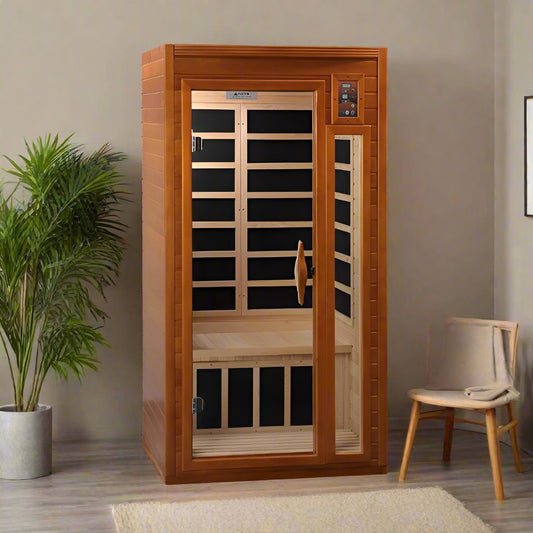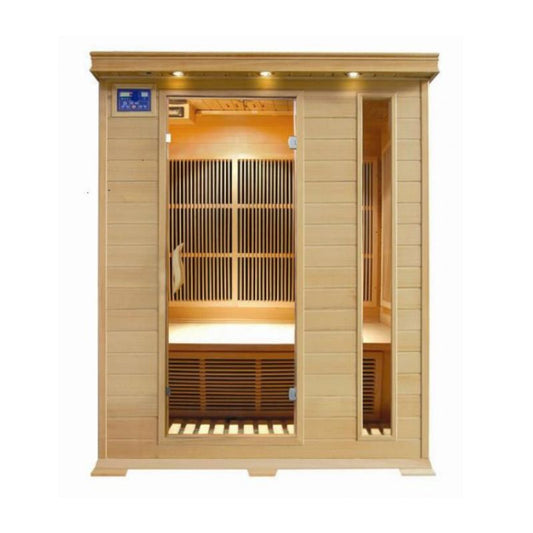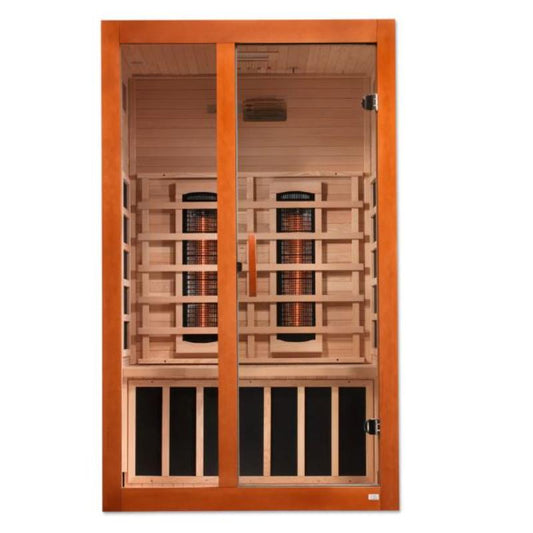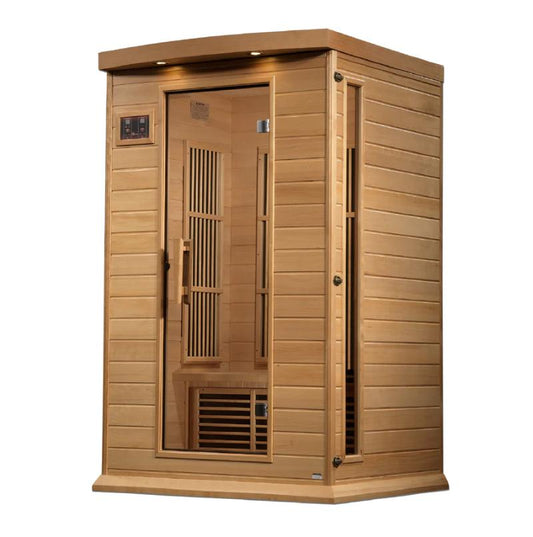-


Dynamic Saunas Barcelona Elite 2 Person Ultra Low EMF Far Infrared Sauna (Model DYN-6106-01)
Regular price $2,299.00Regular priceUnit price per$3,999.00Sale price $2,299.00Sold out -
Dynamic Saunas San Marino 2 Person Ultra Low EMF Far Infrared Sauna (Model DYN-6206-01)
Regular price $2,499.00Regular priceUnit price per$4,999.00Sale price $2,499.00Sold out -
Maxxus 2 Person Sauna - Seattle MX-J206-01 | Low EMF, Indoor FAR Infrared Sauna
Regular price $2,299.00Regular priceUnit price per$3,699.00Sale price $2,299.00Sale -
SunRay Roslyn 4 Person Indoor Infrared Sauna - Red Cedar | HL400KS
Regular price $4,299.00Regular priceUnit price per$6,449.00Sale price $4,299.00Sale -
Dynamic Saunas Versailles 2 Person Indoor Far Infrared Sauna (Model DYN-6202-03)
Regular price $2,299.00Regular priceUnit price per$3,999.00Sale price $2,299.00Sold out -
Dynamic Saunas Venice 2 Person Low EMF Far Infrared Sauna (Model DYN-6210-01)
Regular price $2,499.00Regular priceUnit price per$4,699.00Sale price $2,499.00Sale -
Dynamic Saunas Cardoba 2 Person Full Spectrum Indoor Infrared Sauna (Model DYN-6203-02 FS)
Regular price $3,299.00Regular priceUnit price per$5,999.00Sale price $3,299.00Sale -
Golden Designs Catalonia 8 Person Infrared Sauna / Hot Yoga Room – GDI-6880-02
Regular price $9,999.00Regular priceUnit price per$14,999.00Sale price $9,999.00Sale -
Dynamic Saunas Barcelona 2 Person Low EMF Indoor Infrared Sauna (Model DYN-6106-01)
Regular price $1,999.00Regular priceUnit price per$3,499.00Sale price $1,999.00Sold out -
Maxxus Sauna - 2 person Full Spectrum Indoor Infrared Sauna | MX-M206-01 FS CED
Regular price $4,299.00Regular priceUnit price per$6,499.00Sale price $4,299.00Sale -
Dynamic Saunas Lugano 3 Person Low EMF Far Infrared Sauna (Model DYN-6336-02)
Regular price $2,699.00Regular priceUnit price per$5,999.00Sale price $2,699.00Sold out -
Finnmark Trinity 2-Person Hybrid Home Sauna with Infrared & Traditional Heat | FD-4
Regular price $7,795.00Regular priceUnit price per$8,799.00Sale price $7,795.00Sold out -
Dynamic Saunas Bellagio 2–3 Person Indoor Infrared Sauna (Model DYN-6306-02)
Regular price $2,699.00Regular priceUnit price per$5,999.00Sale price $2,699.00Sale -
Dynamic Saunas Vittoria 2 Person Low EMF Far Infrared Sauna (Model DYN-6220-01)
Regular price $2,699.00Regular priceUnit price per$4,999.00Sale price $2,699.00Sale -
SunRay Bristol Bay Corner 4 Person Infrared Sauna - Red Cedar | HL400KC
Regular price $4,299.00Regular priceUnit price per$6,449.00Sale price $4,299.00Sale -
SunRay Aspen 3 Person, Indoor Infrared Sauna - Canadian Hemlock | HL300C
Regular price $3,299.00Regular priceUnit price per$4,949.00Sale price $3,299.00Sale -
Dynamic Saunas Santiago 2 Person Full Spectrum Infrared Sauna (Model DYN-6209-03)
Regular price $3,299.00Regular priceUnit price per$5,999.00Sale price $3,299.00Sold out -
Maxxus MX-M306-01 FS CED | Full Spectrum Indoor Infrared Sauna - 3 Person
Regular price $4,899.00Regular priceUnit price per$7,999.00Sale price $4,899.00Sale -
Golden Designs Monaco Elite 6 Person Near Zero EMF Infrared Sauna – GDI-6996-01
Regular price $6,999.00Regular priceUnit price per$8,999.00Sale price $6,999.00Sale -
Dynamic Saunas Heming 2 Person Low EMF Far Infrared Sauna (Model DYN-6225-02)
Regular price $2,699.00Regular priceUnit price per$4,999.00Sale price $2,699.00Sold out -
SunRay Evansport 2 Person, Indoor Infrared Sauna - Canadian Hemlock | HL200C
Regular price $2,699.00Regular priceUnit price per$4,049.00Sale price $2,699.00Sale -
Maxxus 2 Person Sauna - MX-J206-01 ZF | Near Zero, Indoor FAR Infrared Sauna
Regular price $4,299.00Regular priceUnit price per$6,499.00Sale price $4,299.00Sale -
Maxxus MX-K406-01 | 4 Person Low EMF Indoor FAR Infrared Sauna
Regular price From $3,699.00Regular priceUnit price per$5,999.00Sale price From $3,699.00Sale -
Finnmark 3-4 Person Full-Spectrum Infrared Sauna | FD-3
Regular price $6,495.00Regular priceUnit price per
















































